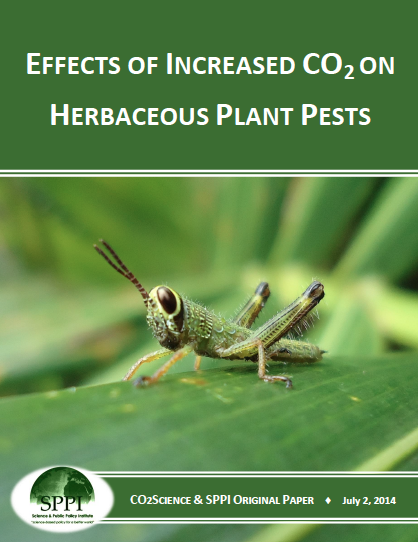News / Science & Technology
Effects of Increased CO2 on Herbaceous Plant Pests

Kerslake et al. (1998) grew five-year-old heather (Calluna vulgaris) plants that they collected from a Scottish moor within open-top chambers maintained at atmospheric CO2 concentrations of 350 and 600 ppm, where at two different times during the study, larvae of the destructive winter moth Operophtera brumata - whose outbreaks periodically cause extensive damage to heather moorland - were allowed to feed upon currentyear shoots. Interestingly, feeding upon the highCO2-grown foliage did not affect larval growth rates, development or final pupal weights; neither was moth survivorship significantly altered. Hence, the three researchers concluded that their study provided "no evidence that increasing atmospheric CO2 concentrations will affect the potential for outbreak of Operophtera brumata on this host." What it did show, however, was a significant CO2induced increase in heather water use efficiency.
Newman et al. (1999) inoculated tall fescue (Festuca arundinacea) plants growing in open-top chambers maintained at atmospheric CO2 concentrations of 350 and 700 ppm with bird cherry-oat aphids (Rhopalosiphum padi). And after nine weeks, the plants growing in the CO2-enriched air had experienced a 37% increase in productivity and were covered with far fewer aphids than the plants growing in ambient air. The result, therefore, was a "win" for the favored plants and a "loss" for the destructive insects.
Read More
Read More
